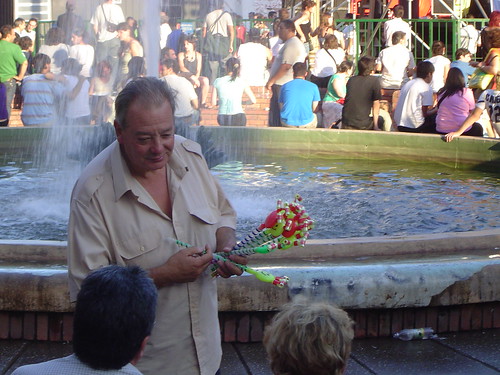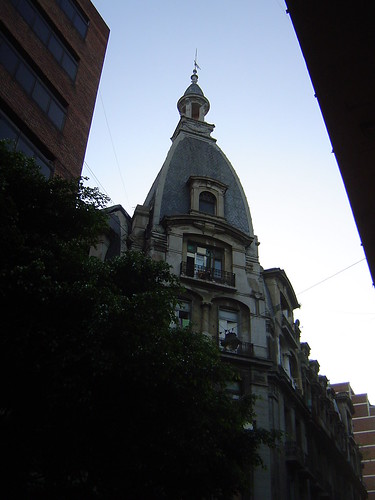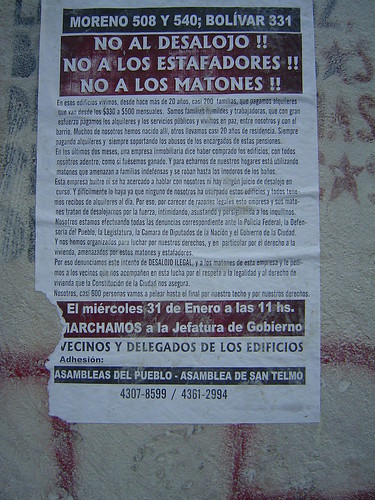In another post I have to describe my long, almost futile, search among Buenos Aires bookstores for Eduardo Galeano’s remarkable, three volume Memoria del Fuego (the Spanish version). But since I’m short on time now, I want to pass on what Galeano wrote about housing for the poor in Buenos Aires at the end of the 19th century.
First, the English translation by Cedric Belfrage:
In the south are huddled the beaten-down of the earth. In abandoned three-patioed colonial mansions, or in specially built tenements, the workers newly arrived from Naples or Vigo or Bessarabia sleep by turns. Never cold are the scarce beds in the nonspace invaded by braziers and washbasins and chests which serve as cradles. Fights are frequent in the long queues at the door to the only latrine, and silence is an impossible luxury. But sometimes, on party nights, the accordion or mandolin or bagpipes bring back lost voices to these washerwomen and dressmakers, servants of rich bosses and husbands, and ease the loneliness of these men who from sun to sun tan hides, pack meat, saw wood, sweep streets, tote loads, raise and paint walls, roll cigaretttes, grind wheat, and bake bread while their children shine shoes and call out the crime of the day.
Now, the actual Spanish words of Galeano:
Al sur, se apretujan los golpeados de la tierra. En las abandonadas casonas coloniales de tres patios, o en conventillos especialmente contruidos, duermen, por turnos, los trabajadores venidos de Nápoles o Vigo o la Besarabia. Jamás se enfrían las camas, escasas en el ningún espacio invalidido de braseros y palanganas y cajones que hacen de cunas. No faltan peleas en las largas colas a la puerta de la única letrina, y el silencio es un lujo imposible. Pero a veces, en las noches de fiesta, el acordeón o la mandolina o la gaita traen perdidas voces a estas mujeres lavanderas y costureras, sirvientas de patrones y maridos, y alivian la soledad de estos hombres que de sol a sol curten cueros, envasan carne, serruchan madera, barren calles, cargan bultos, alzan y pintan paredes, arman cigarrillos, muelen trigo y hornean pan mientras sus hijos lustran botines y vocean el crimen del día.
Lives of Immigrants
In our everyday wanderings around Buenos Aires, it’s easy to forget how the city (as every city) is always evolving. Things to ponder: are the lives of immigrants in present-day Buenos Aires all that different from those of a hundred years ago? The Italian, Spanish, and Russian immigrants of 1890 all have successfully immigrated into Buenos Aires society and added their own contributions to the city’s identity; over the next decades, how successfully will today’s Bolivian and Peruvian immigrants assimilate into Buenos Aires society and re-mix the city’s identity? In 2090, who will be the dominant immigrant groups in Buenos Aires?


